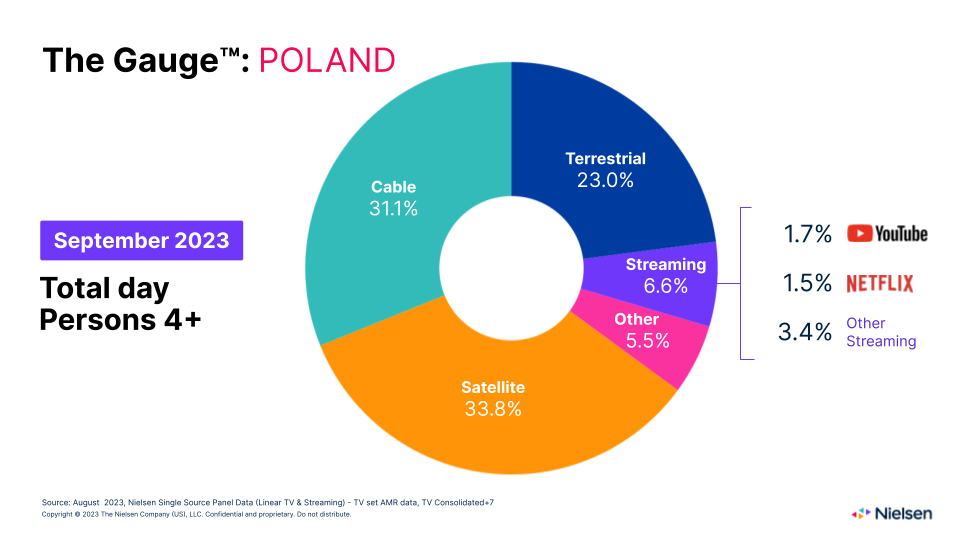The arrival of September brings changes to the TV landscape, as almost 6.4 million people in Poland started the new school year that month. This directly reduces the time that students spend at home, and changes the makeup of video consumption on TV screens.
Young viewers, aged 4-15, spent, on average, 7 minutes less in front of the TV screen in September than in August. In contrast, viewers aged 35-44 spent 6 more minutes in front of the TV than in August 2023. This increase mainly reflected new schedules on the primary, traditional channels: both continuations of well-known titles and new programs. Additionally, before the parliamentary elections scheduled for October, interest has increased in news content: news channels and news programmes gained more audience.
These factors contributed to an increase in the share of traditional TV channels viewership and a decline in the share of video streaming in total TV usage. Among streaming players, Netflix and YouTube slightly lost shares in September, while Disney+, HBO MAX and Player increased their shares.

About The Gauge™
The Gauge™ was created to provide the media industry with a monthly analysis of television usage across key television delivery platforms. Nielsen published its first edition of The Gauge™ in the U.S. in May 2021.
About The Gauge™ Methodology
The data comes from Nielsen’s single-source panel consisting of 3,500 households and almost 9,700 panelists. The Gauge™: Poland is based on monthly AMR (Average Minute Rating) audience share data. The data is presented for people over 4 years old, broken down into cable, satellite, terrestrial television (both linear and shifted in time up to 7 days), and viewership from streaming (live streaming viewership of TV stations on OTT platforms is classified as streaming viewership). The “Other” category includes views of unrecognized content.
Nielsen Poland created this iteration of The Gauge™ using methodologies conceptually similar to those in the U.S. version. Methodological differences should be considered when making any comparisons.
